The document discusses best practices and common mistakes in Redux, emphasizing the importance of immutability and avoiding state mutation. It advocates for the use of immutable libraries, efficient state management, and proper state structure to enhance application performance and maintainability. Key recommendations include not duplicating state, using selectors, and normalizing state to simplify data handling.

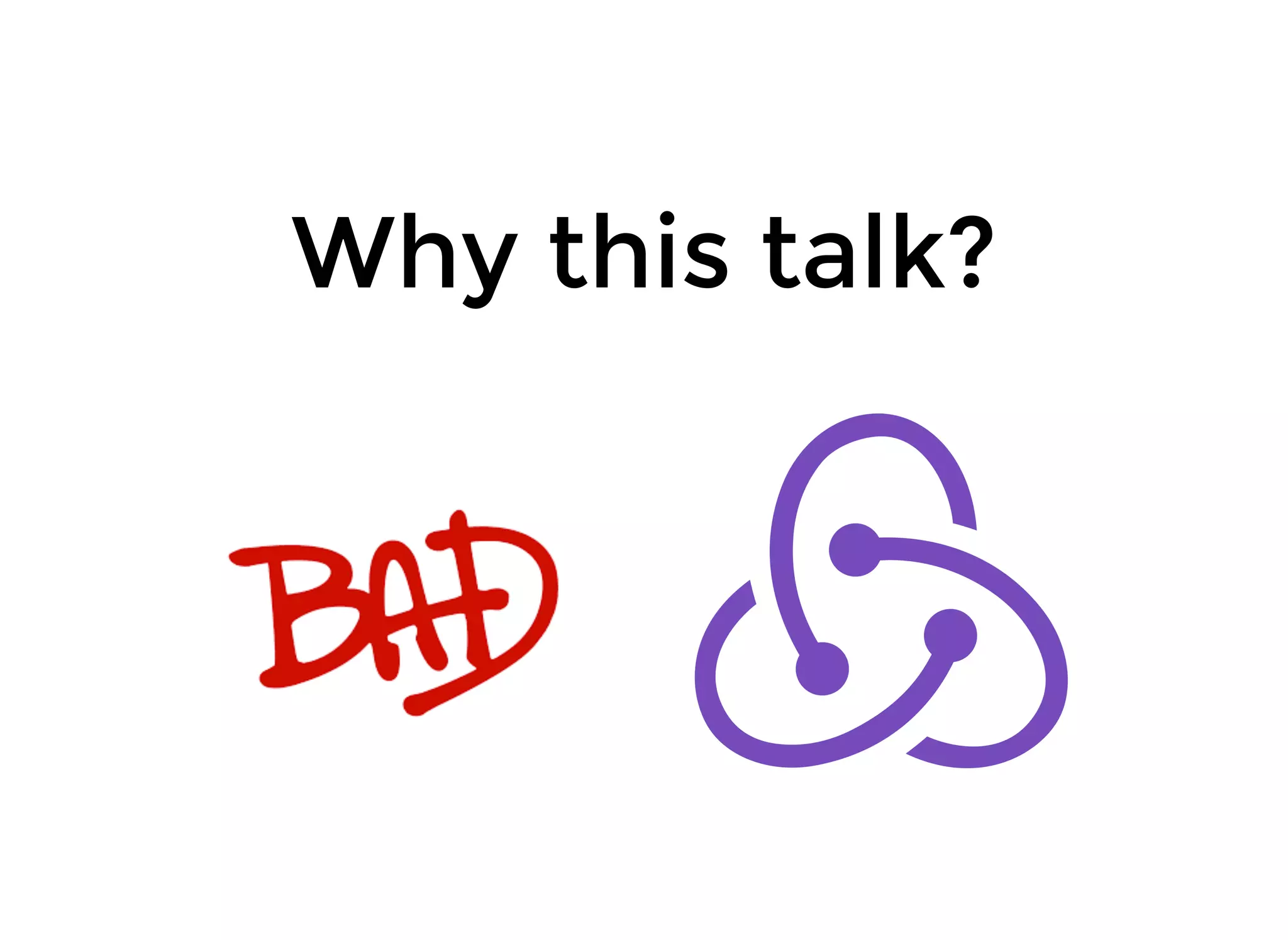
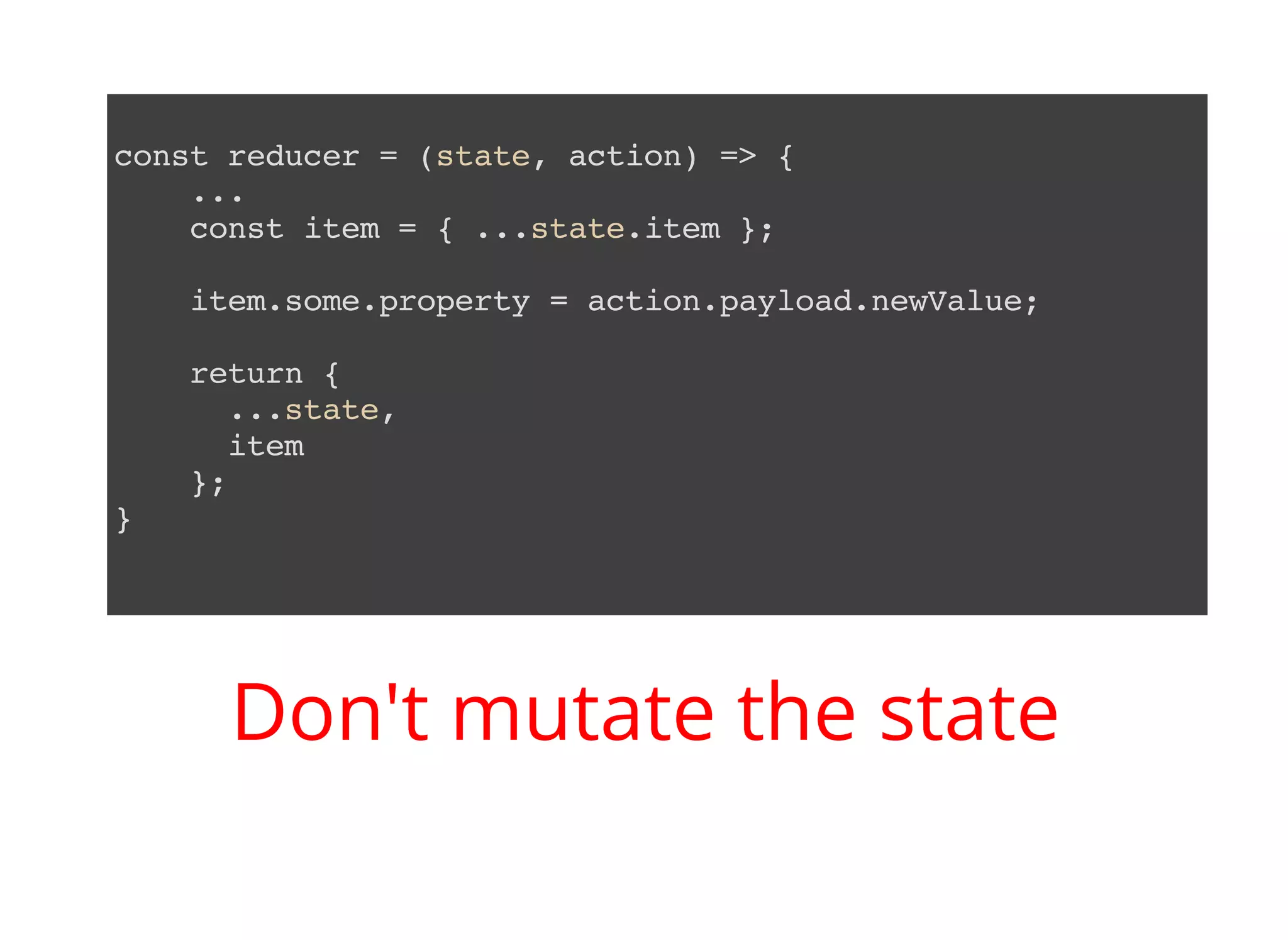
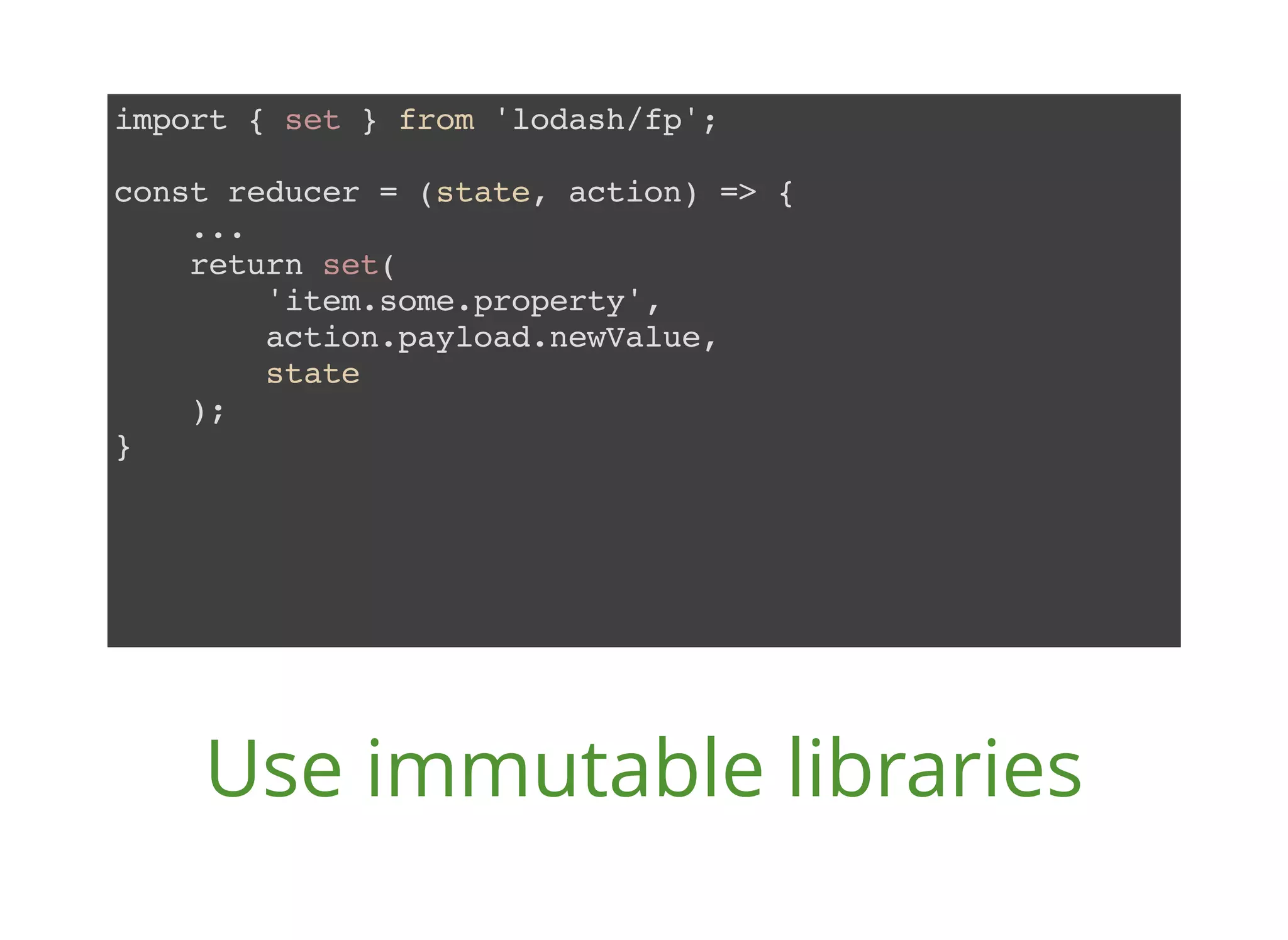

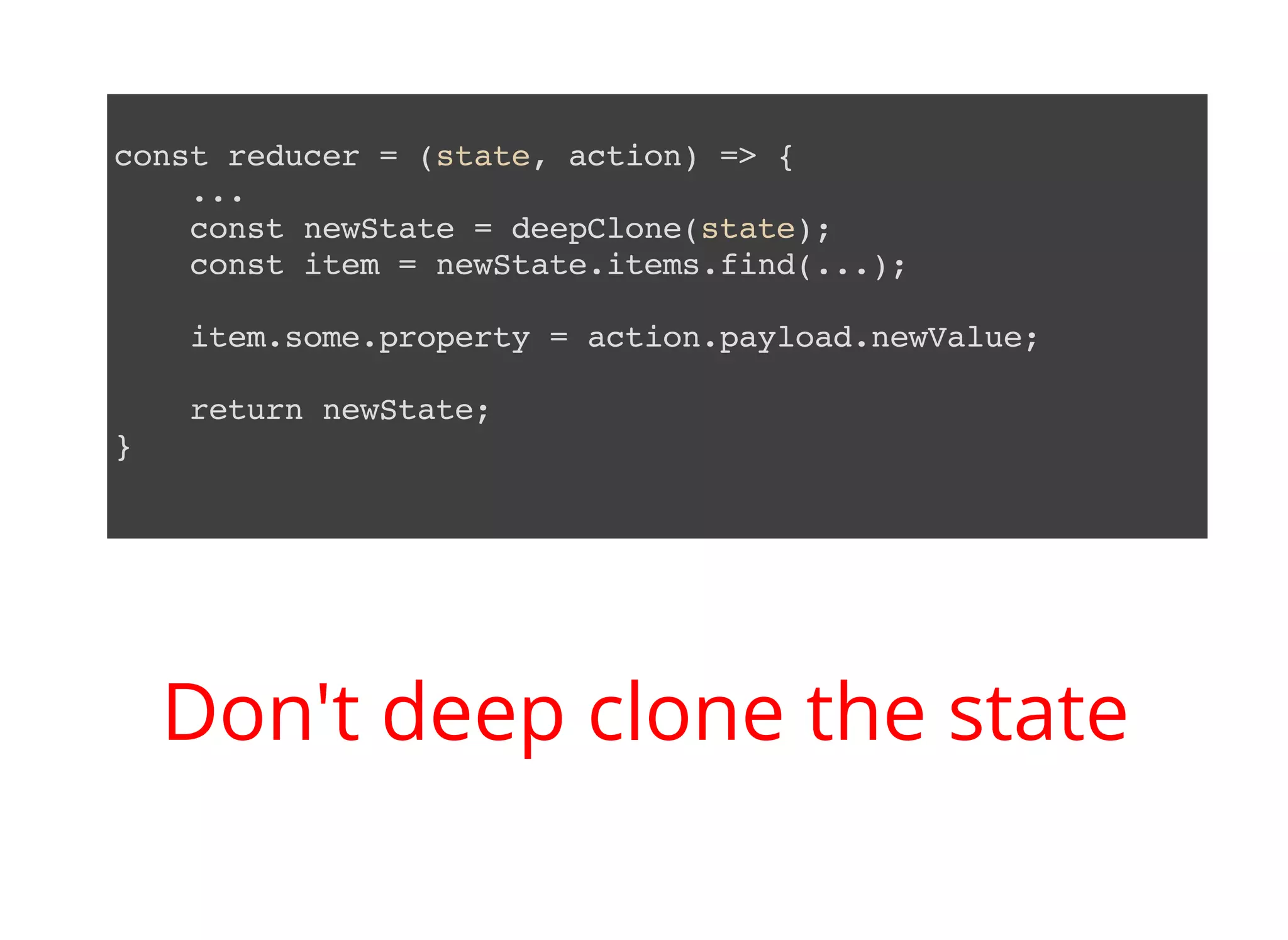
![import { set } from 'lodash/fp'; const reducer = (state, action) => { ... const index = state.items.findIndex(...); return set( ['items', index, 'some', 'property'], action.payload.newValue, state ); } Use immutable libraries](https://image.slidesharecdn.com/redux-bad-practices-180116111409/75/Redux-Bad-Practices-A-List-of-13-Bad-Practices-and-How-to-Avoid-Them-7-2048.jpg)
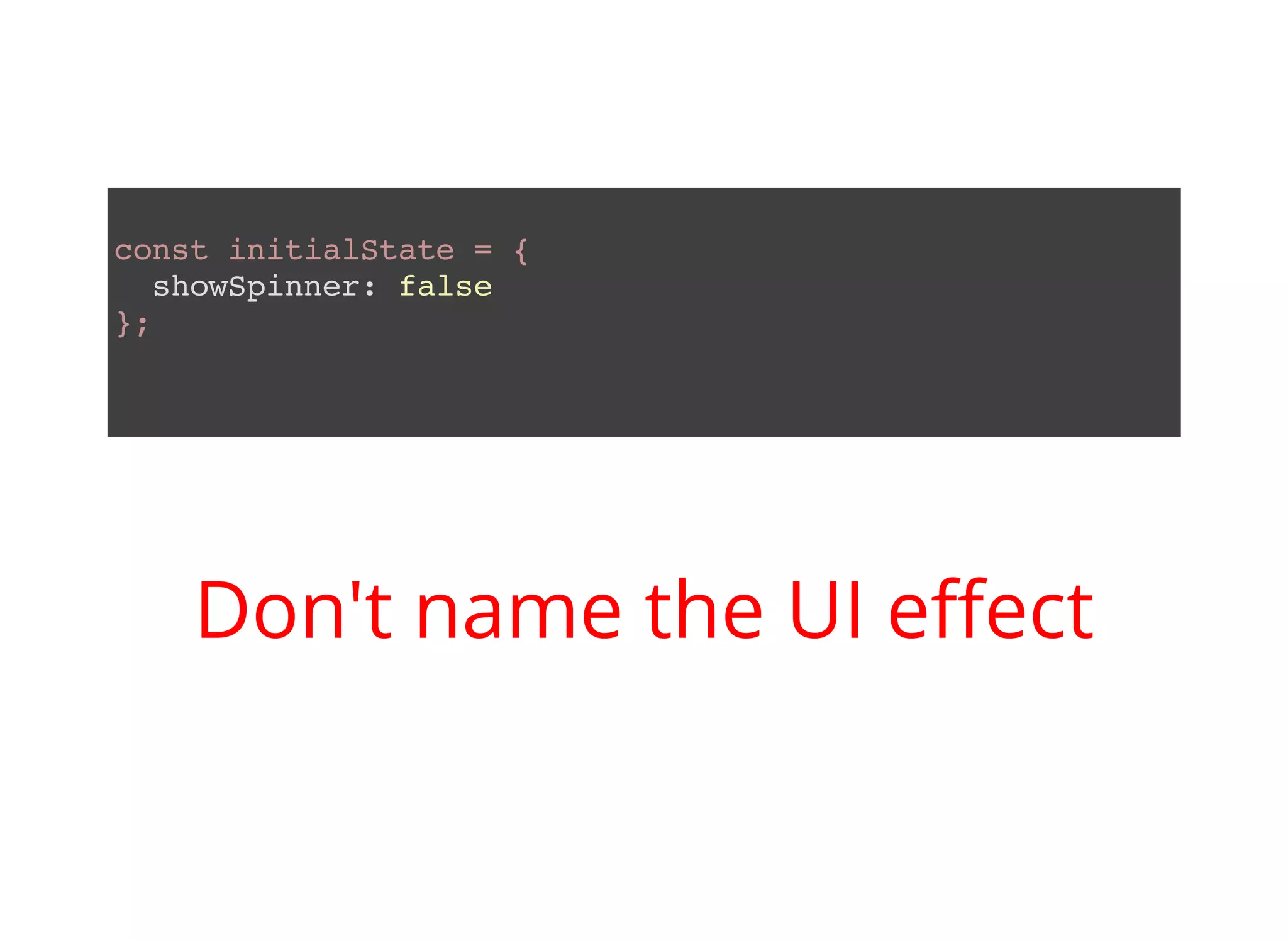
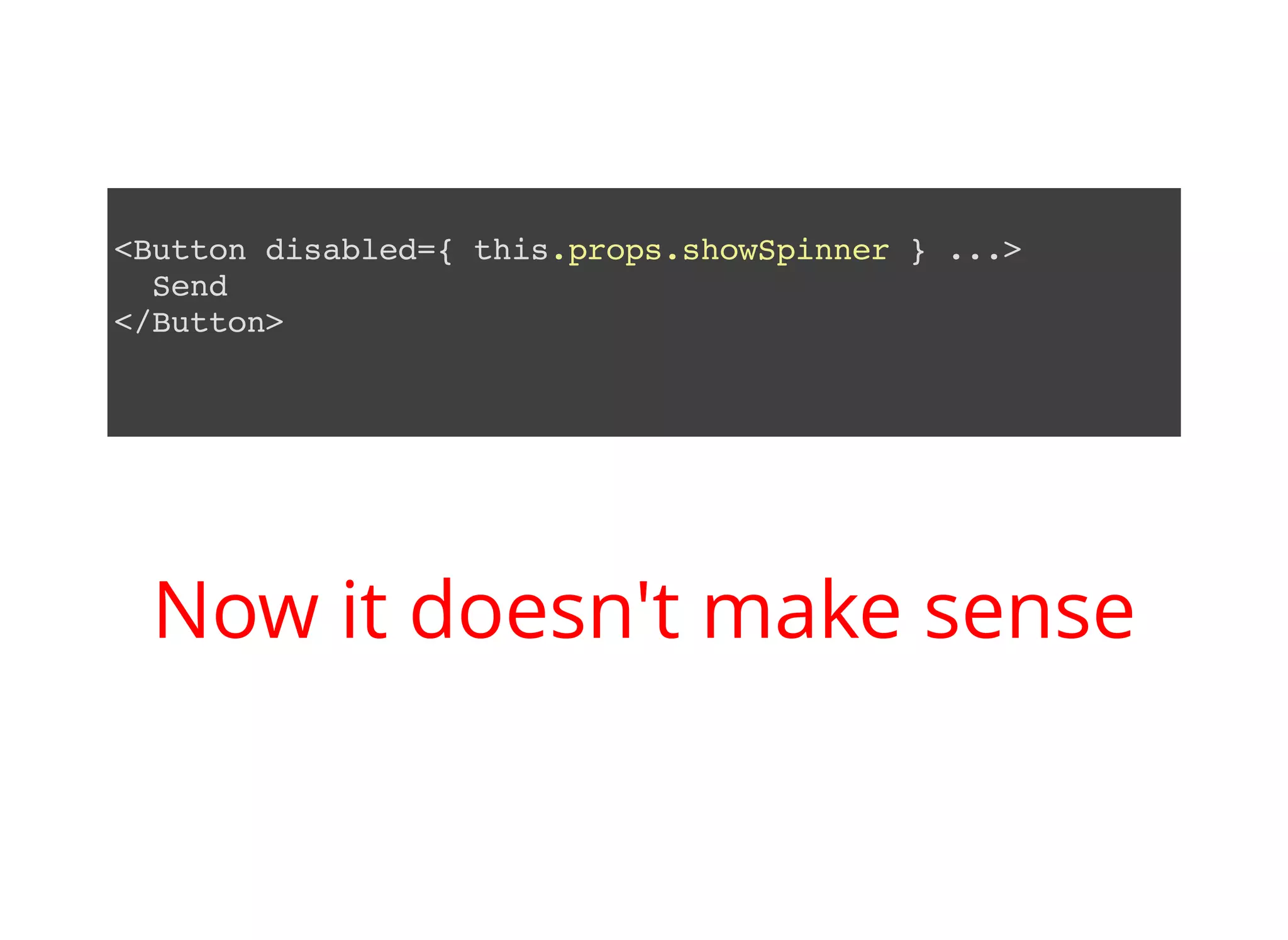
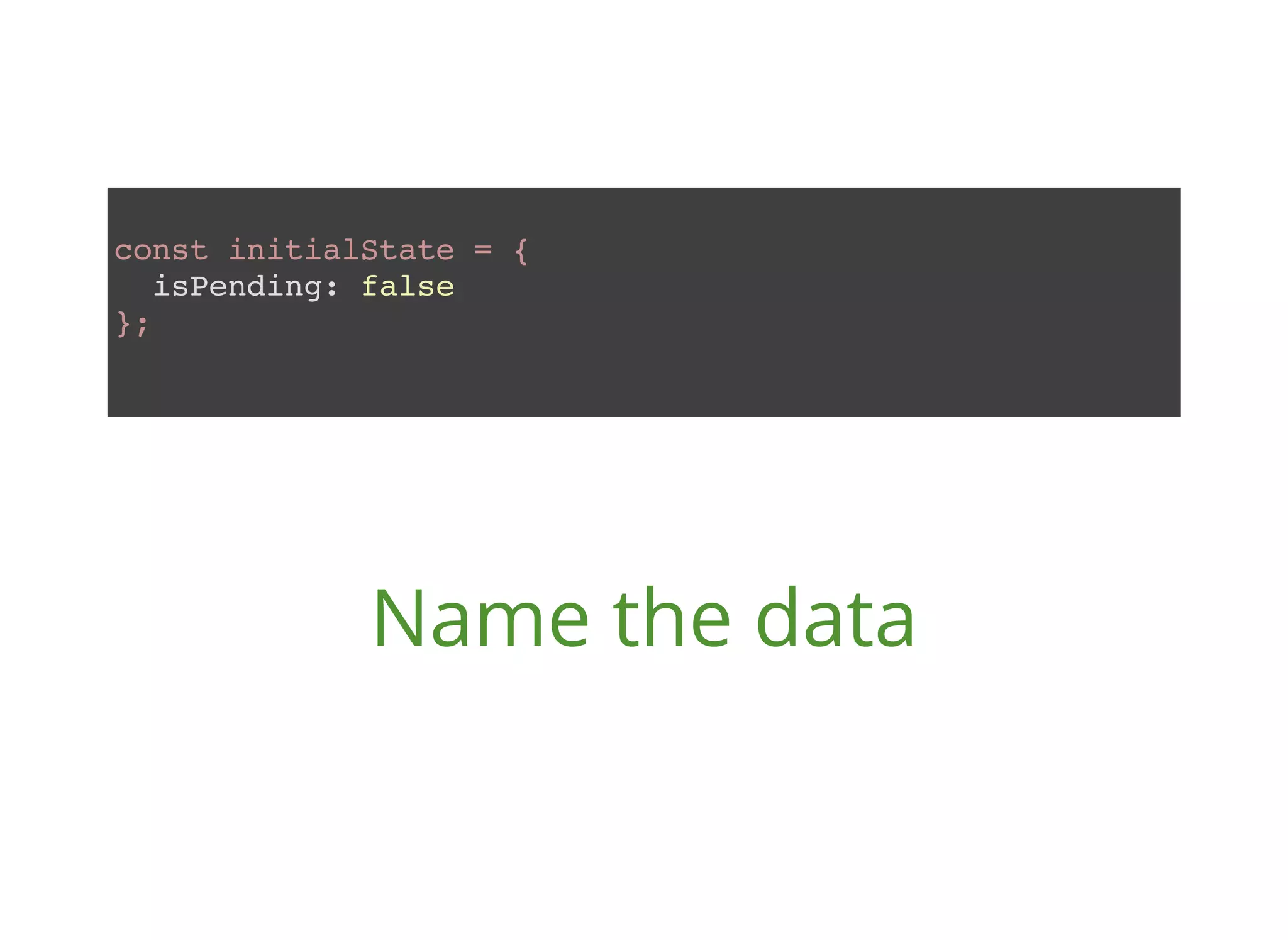
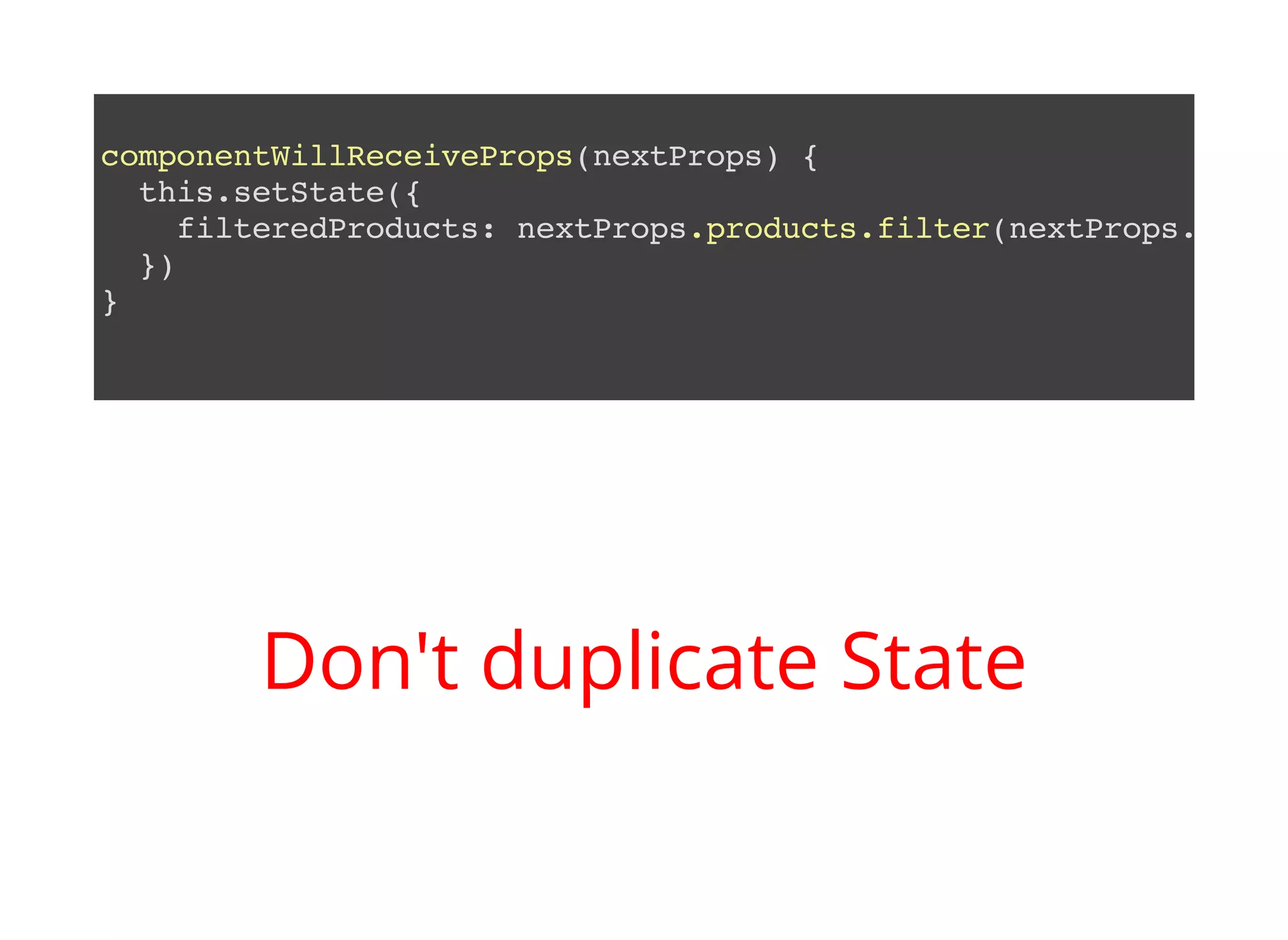
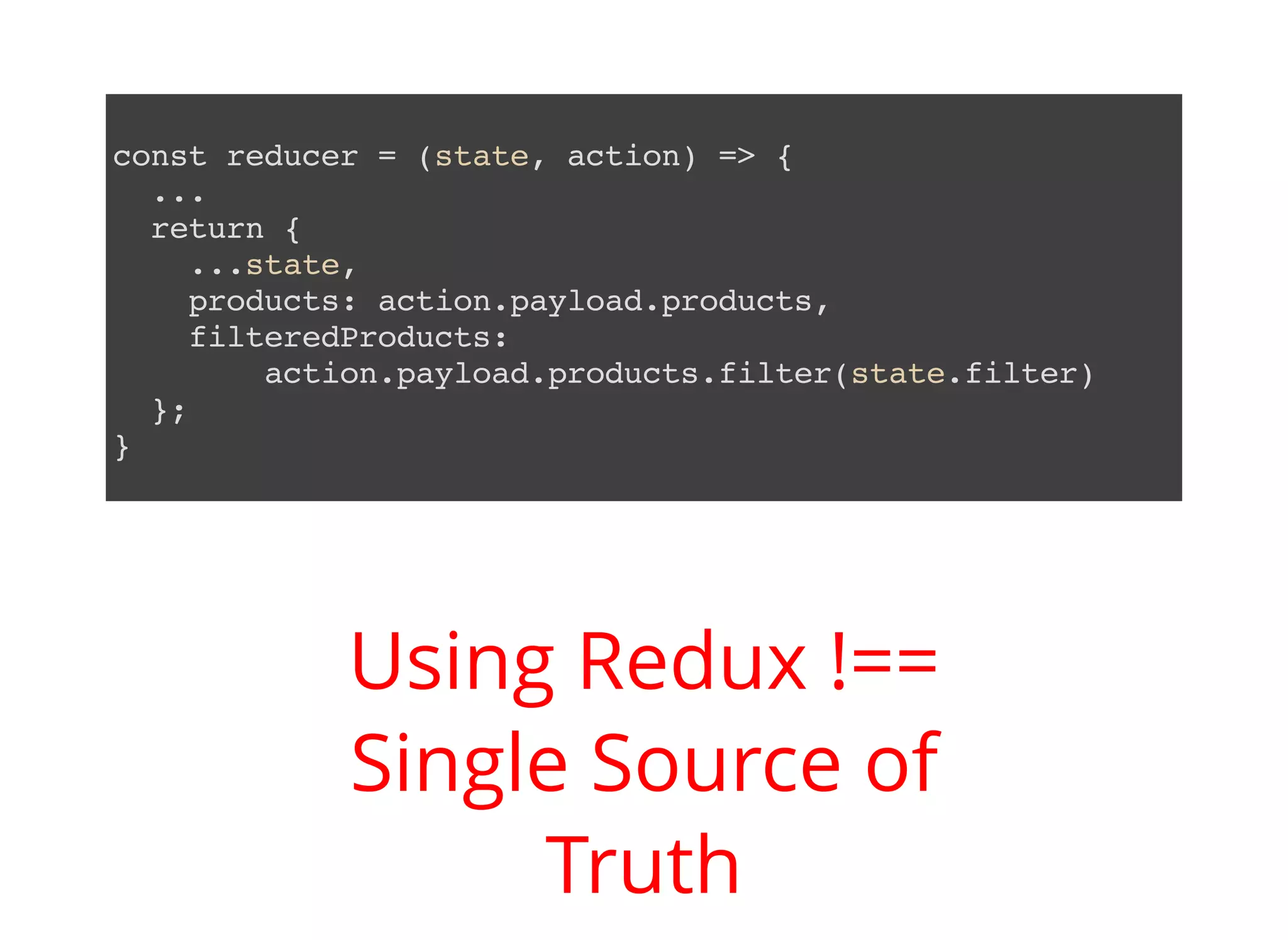
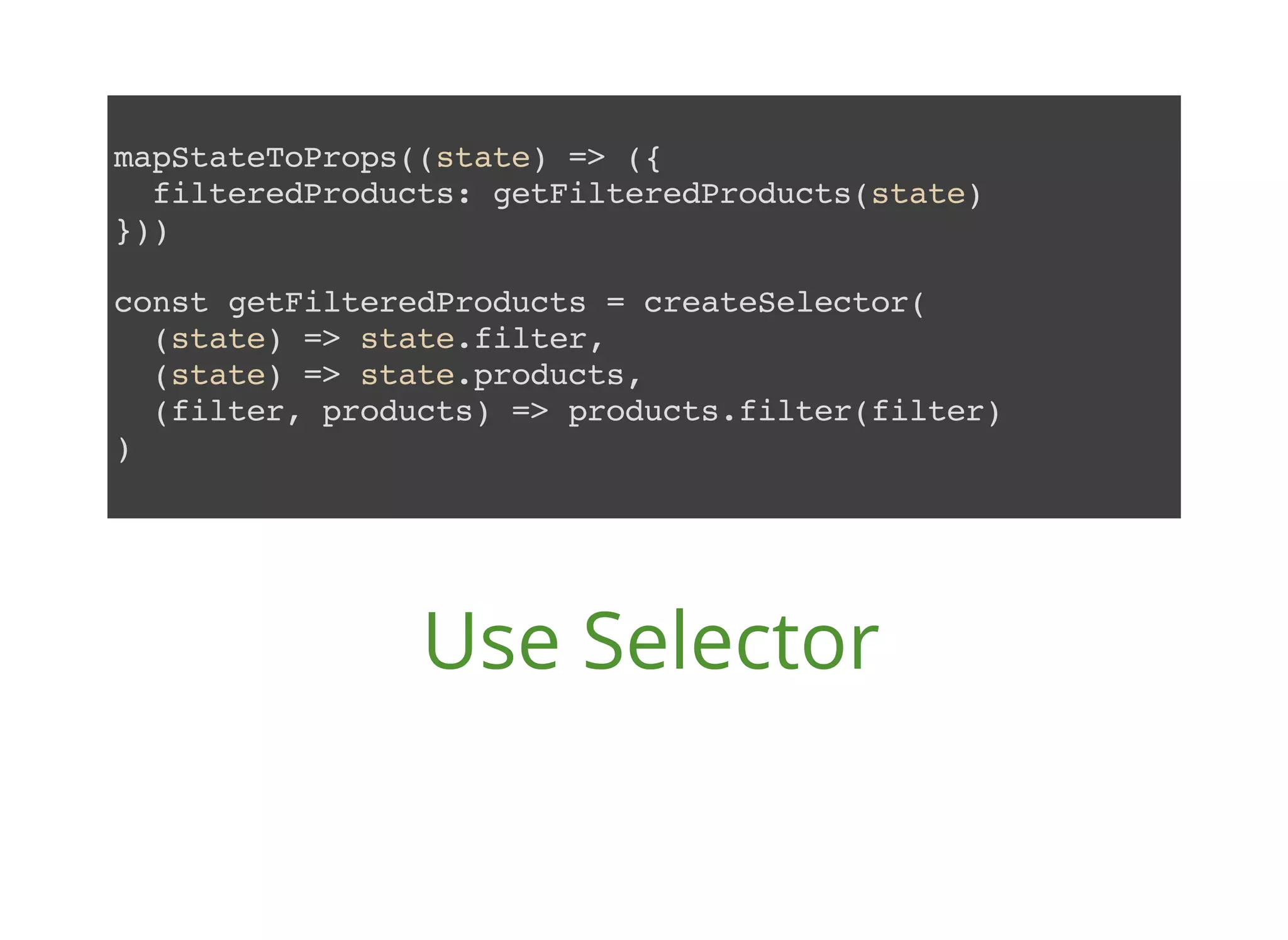
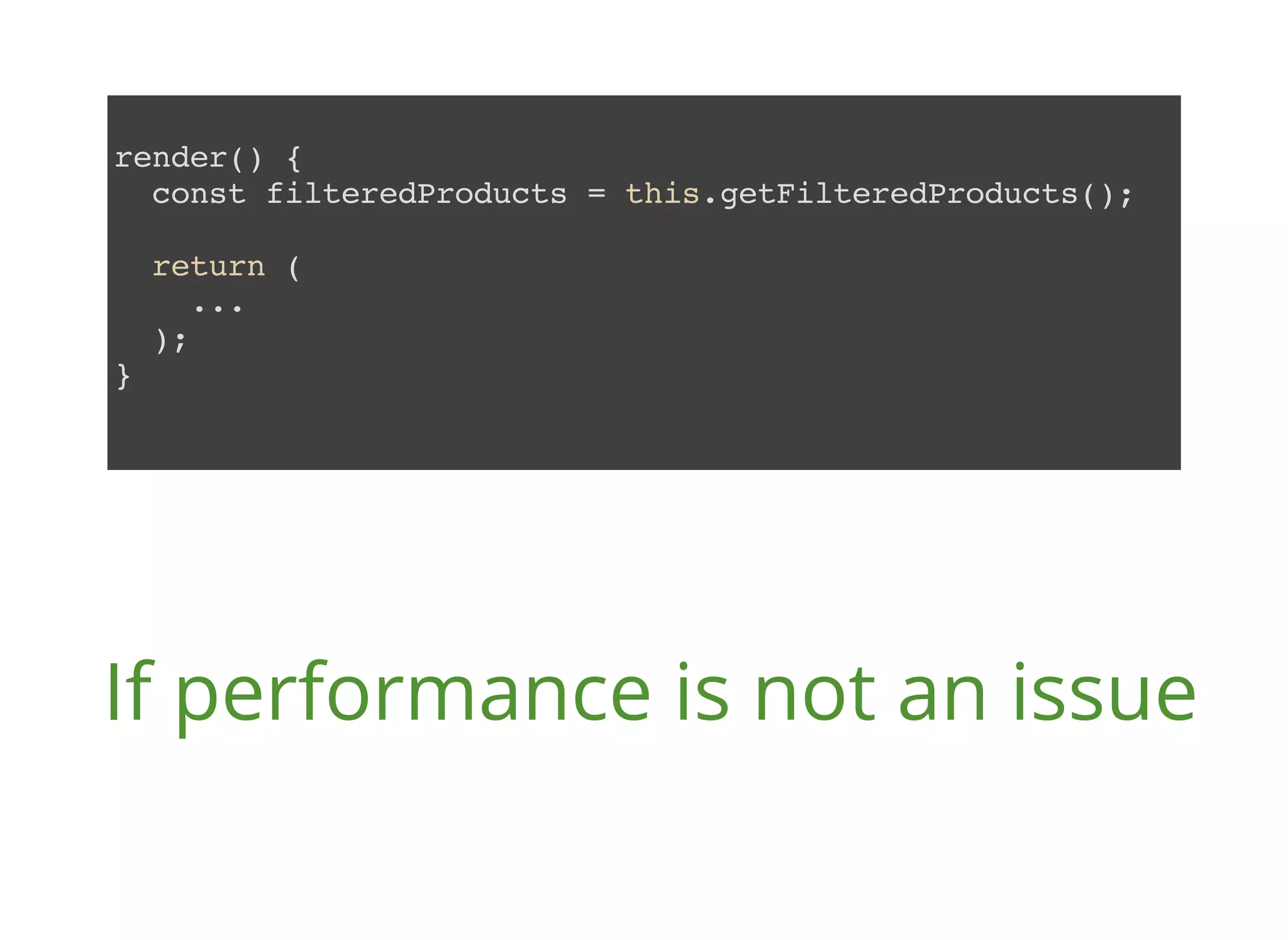
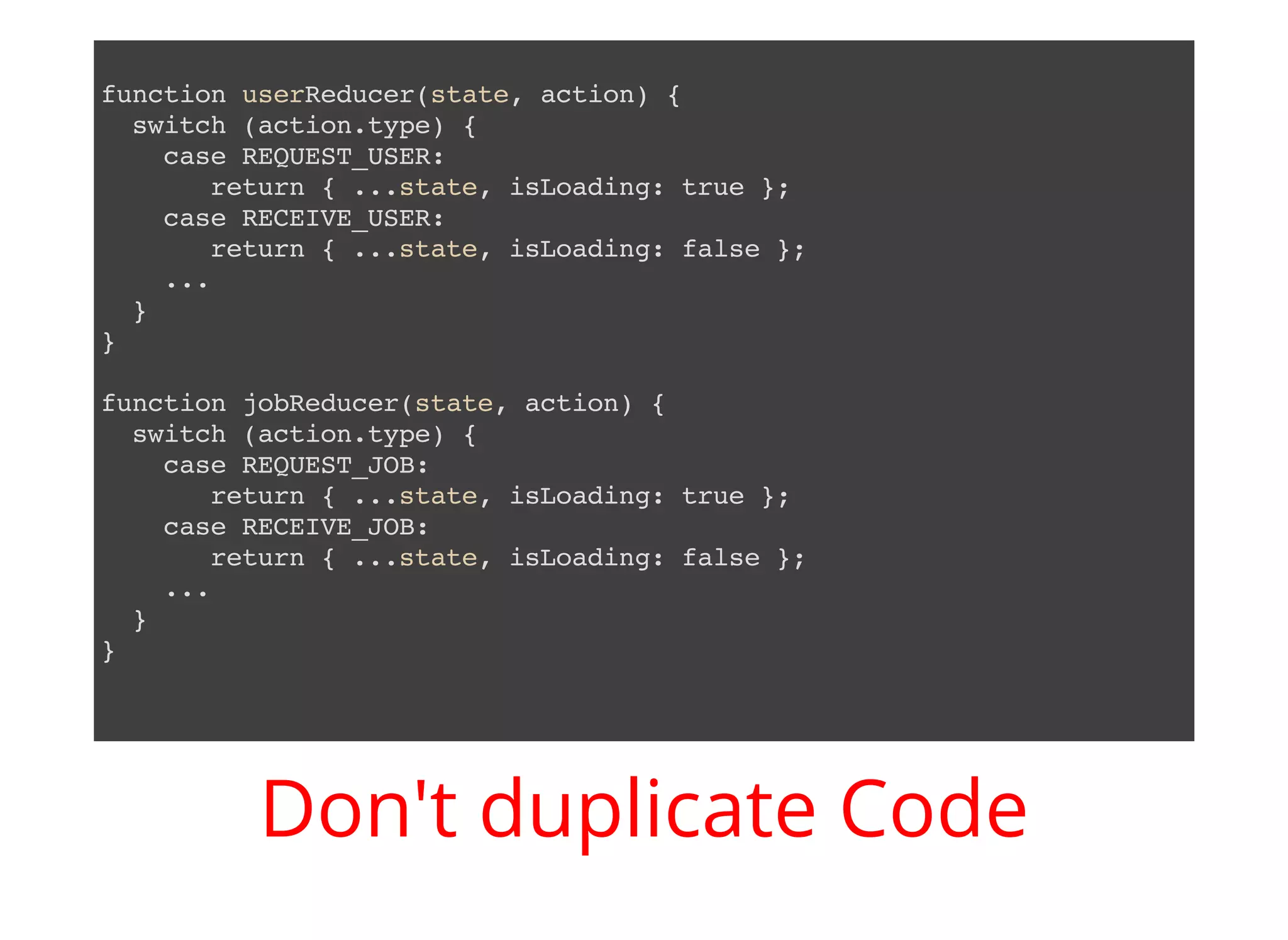
![function networkReducer(state, action) { switch (action.type) { case START_NETWORK: return set( [action.payload.label, 'isLoading'], true, state ) case END_NETWORK: return set( [action.payload.label, 'isLoading'], false, state ) ... } } mapStateToProps((state) => ({ isLoading: state.network.user.isLoading })) Dedicated Reducer](https://image.slidesharecdn.com/redux-bad-practices-180116111409/75/Redux-Bad-Practices-A-List-of-13-Bad-Practices-and-How-to-Avoid-Them-16-2048.jpg)
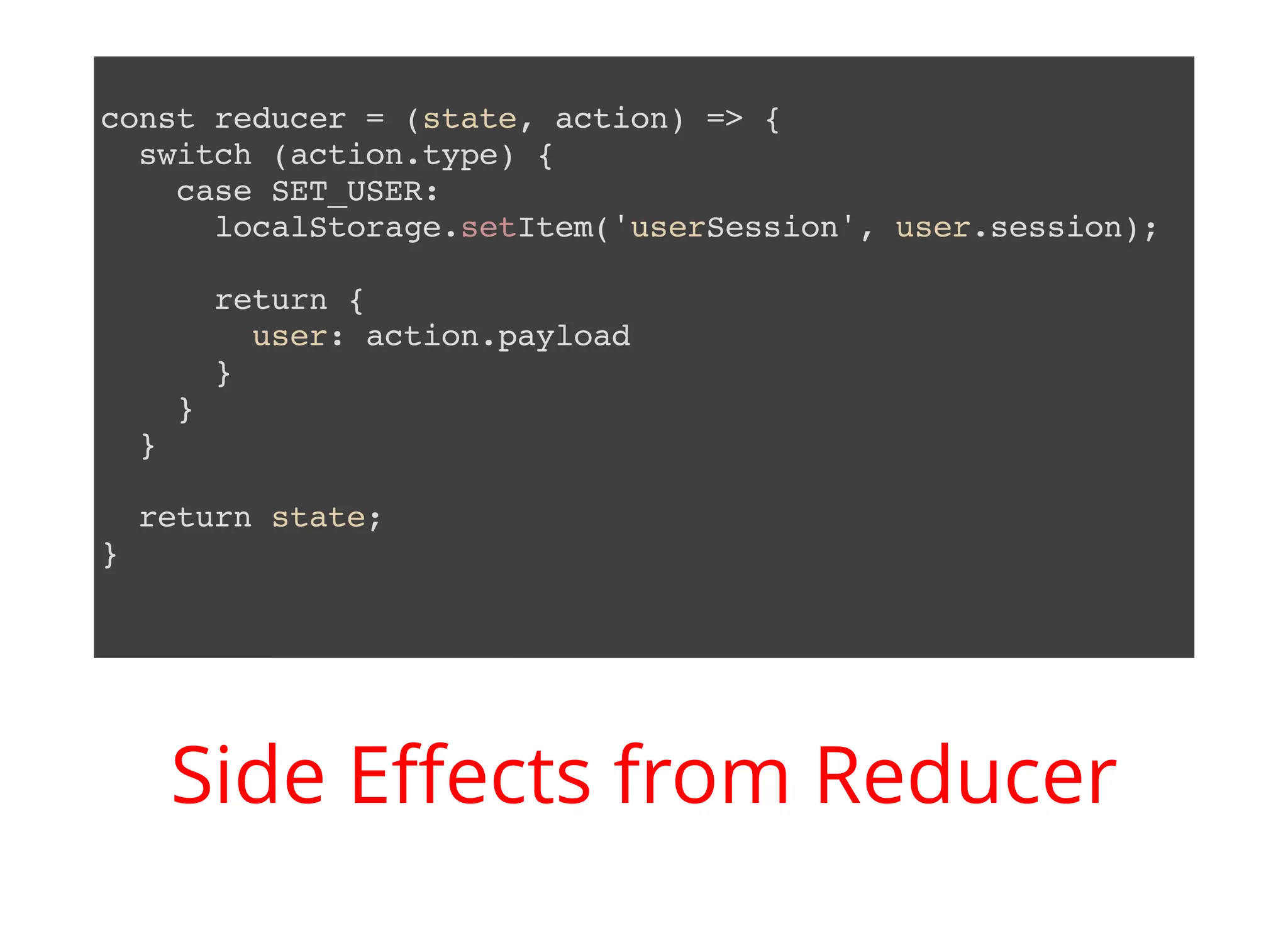
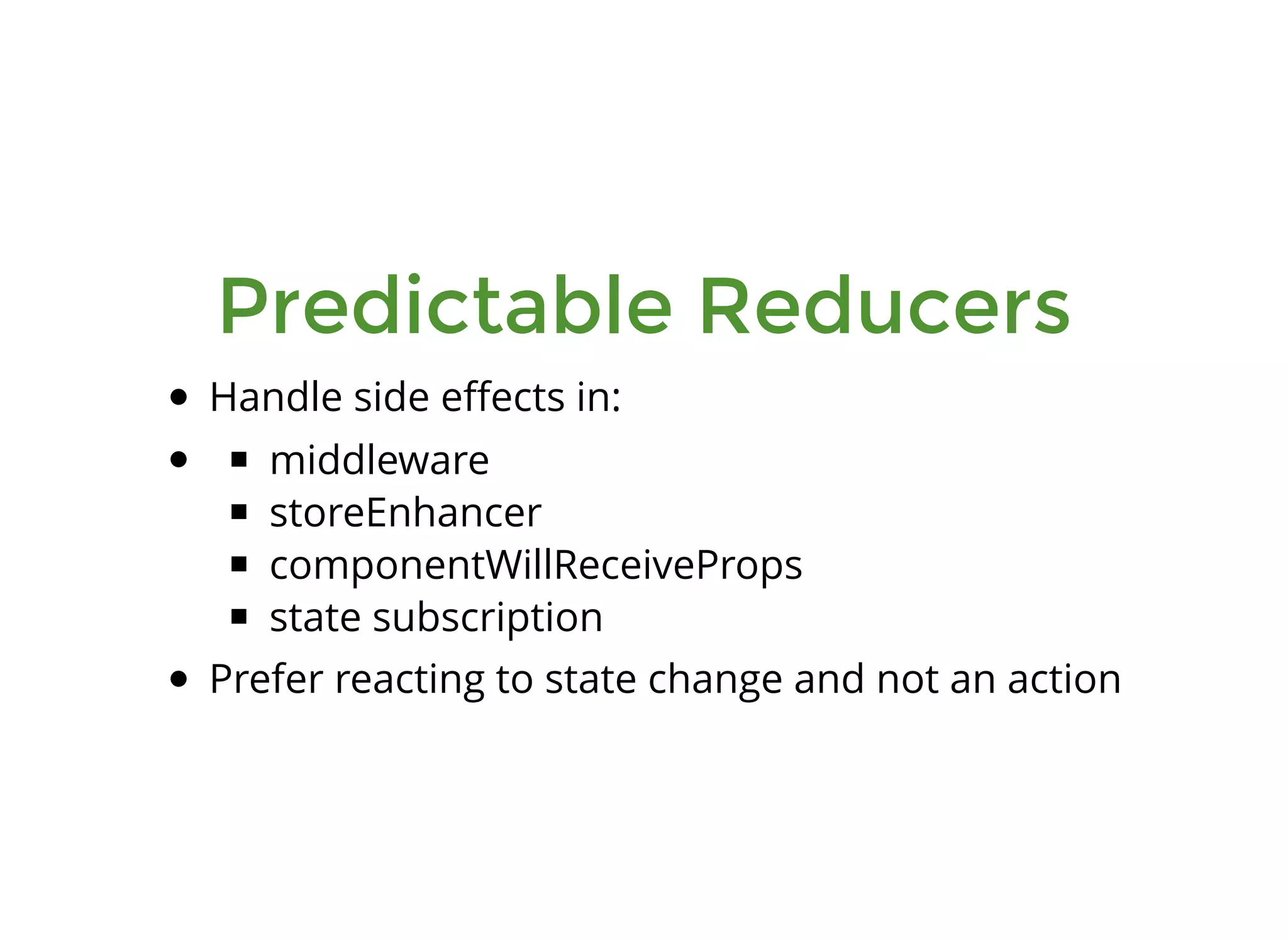
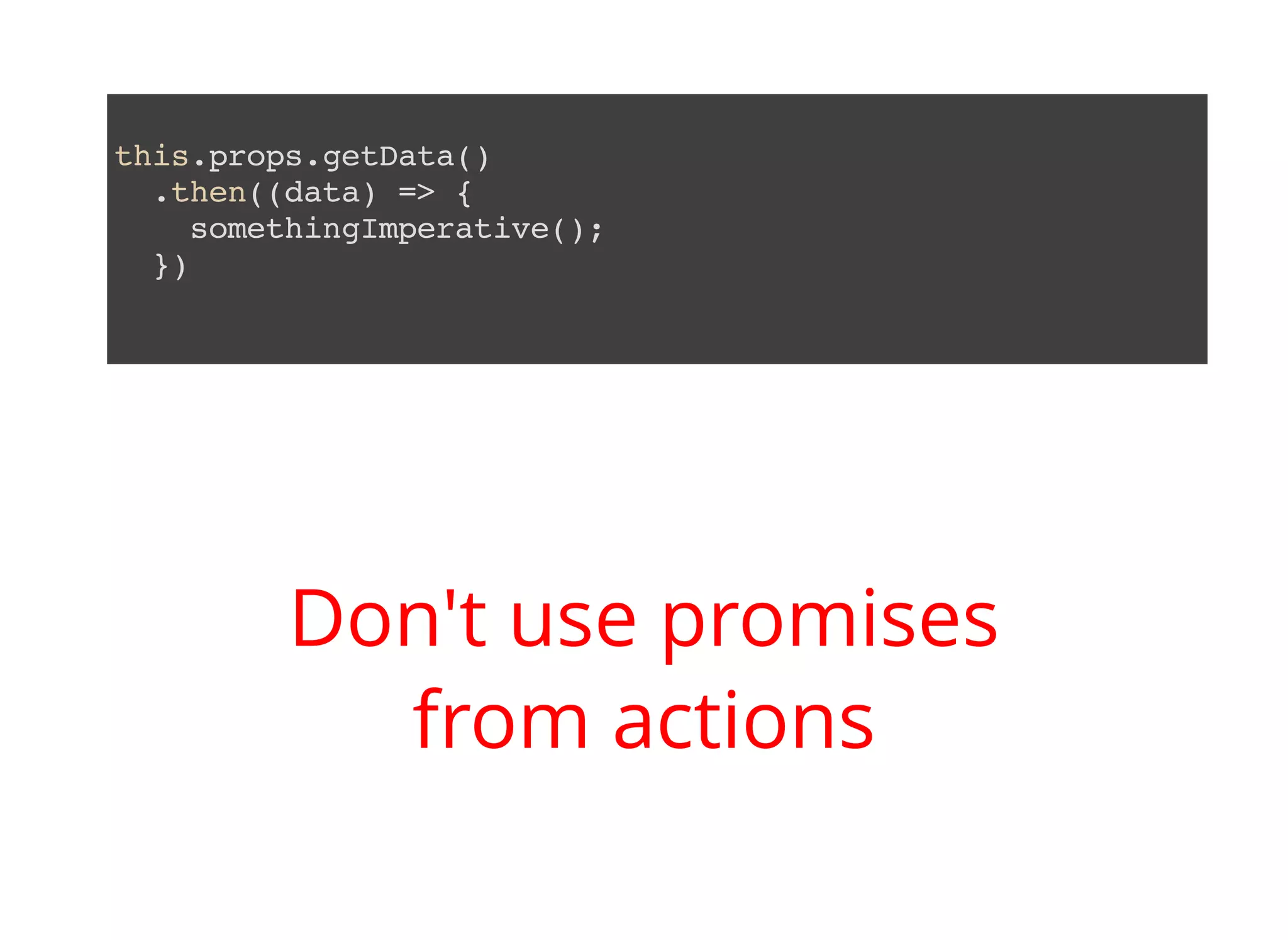
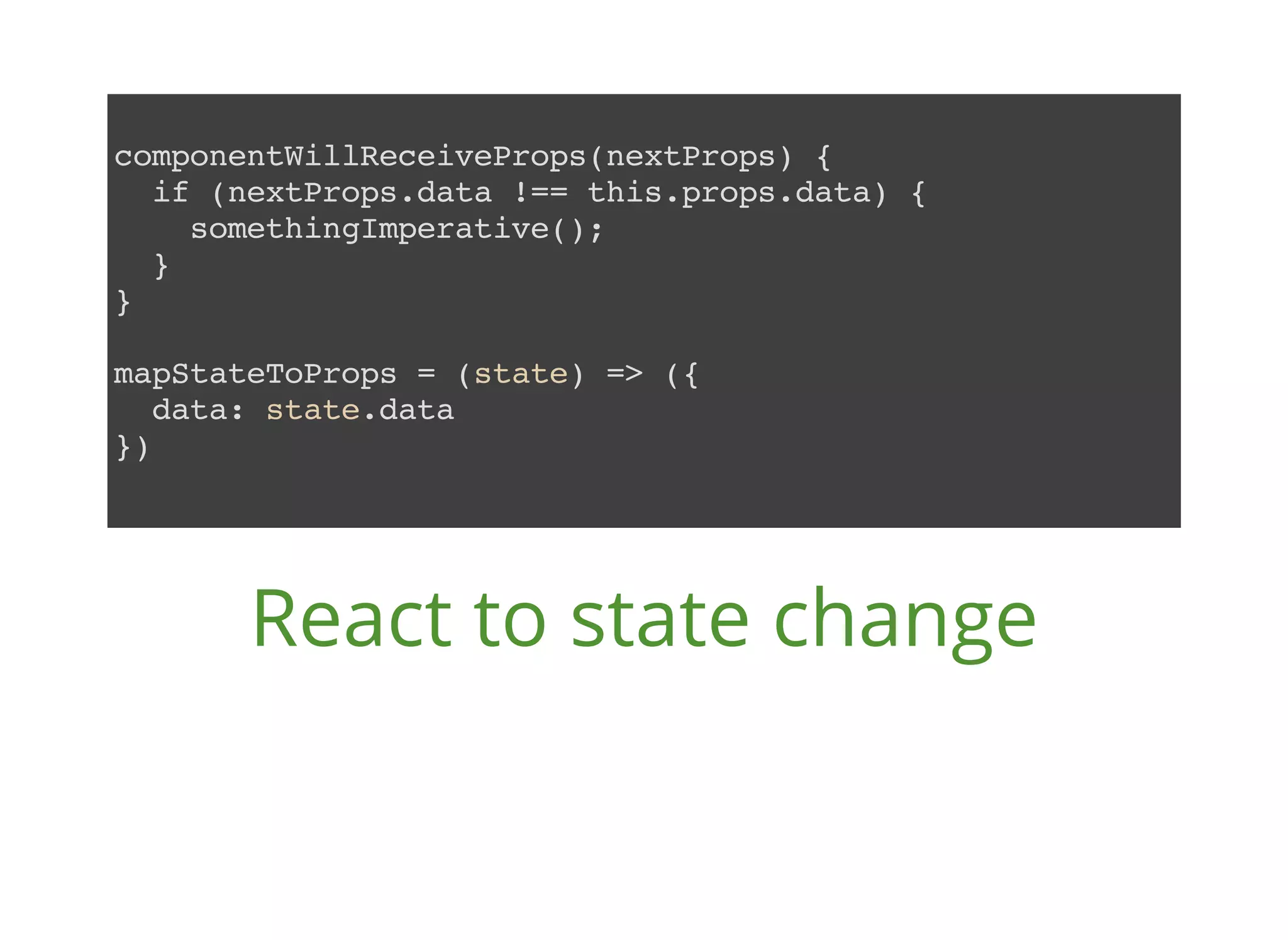
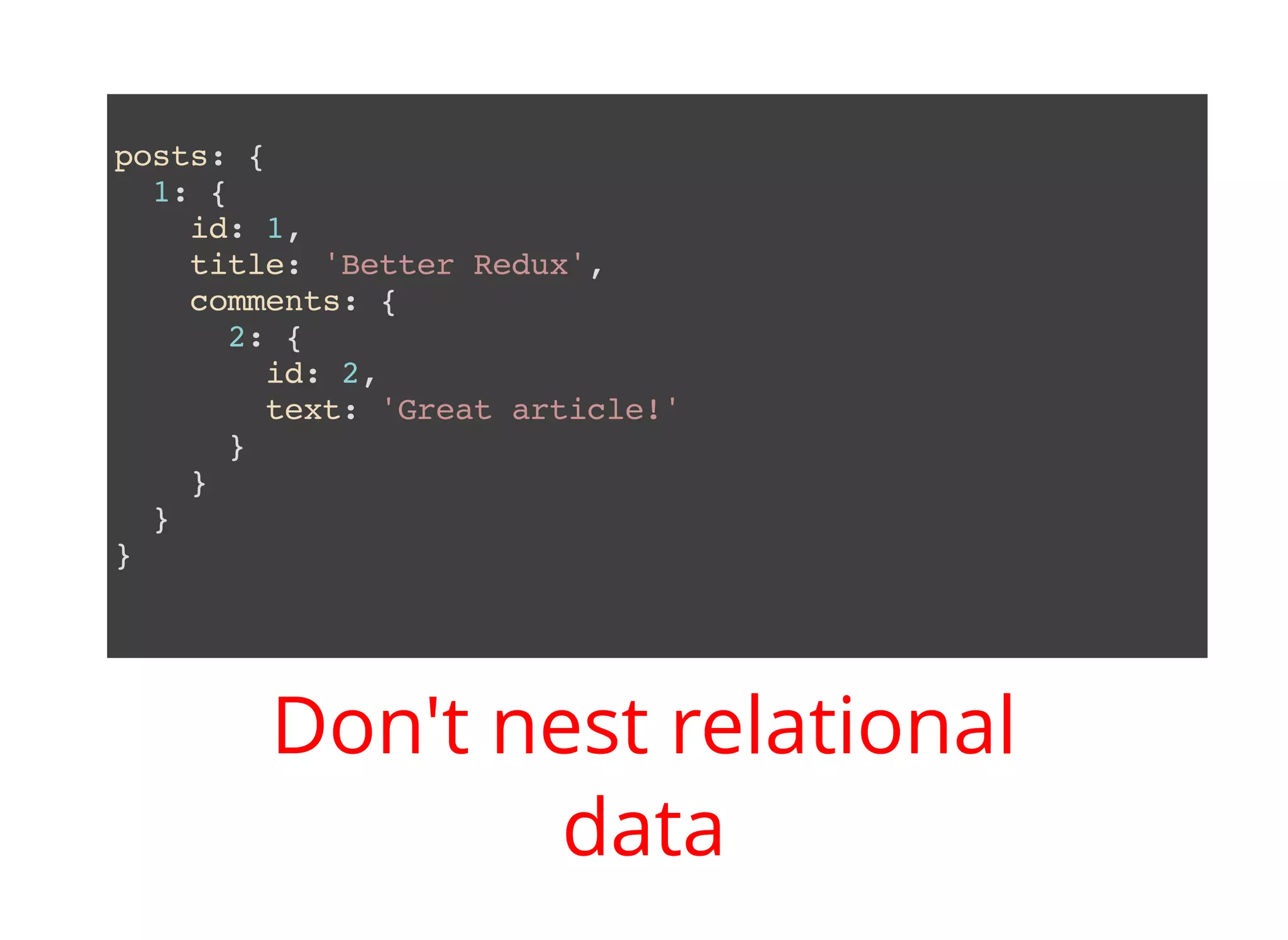
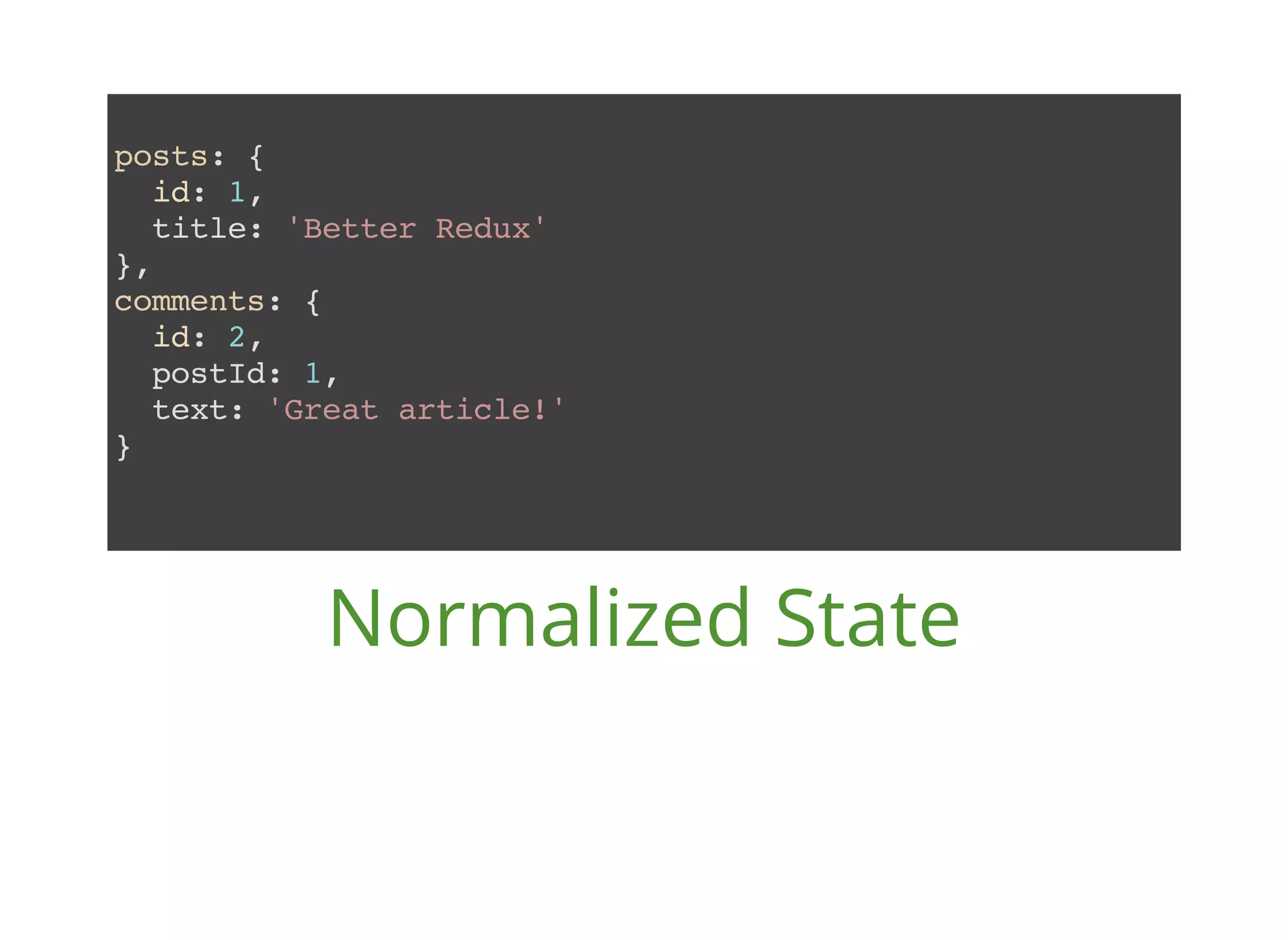
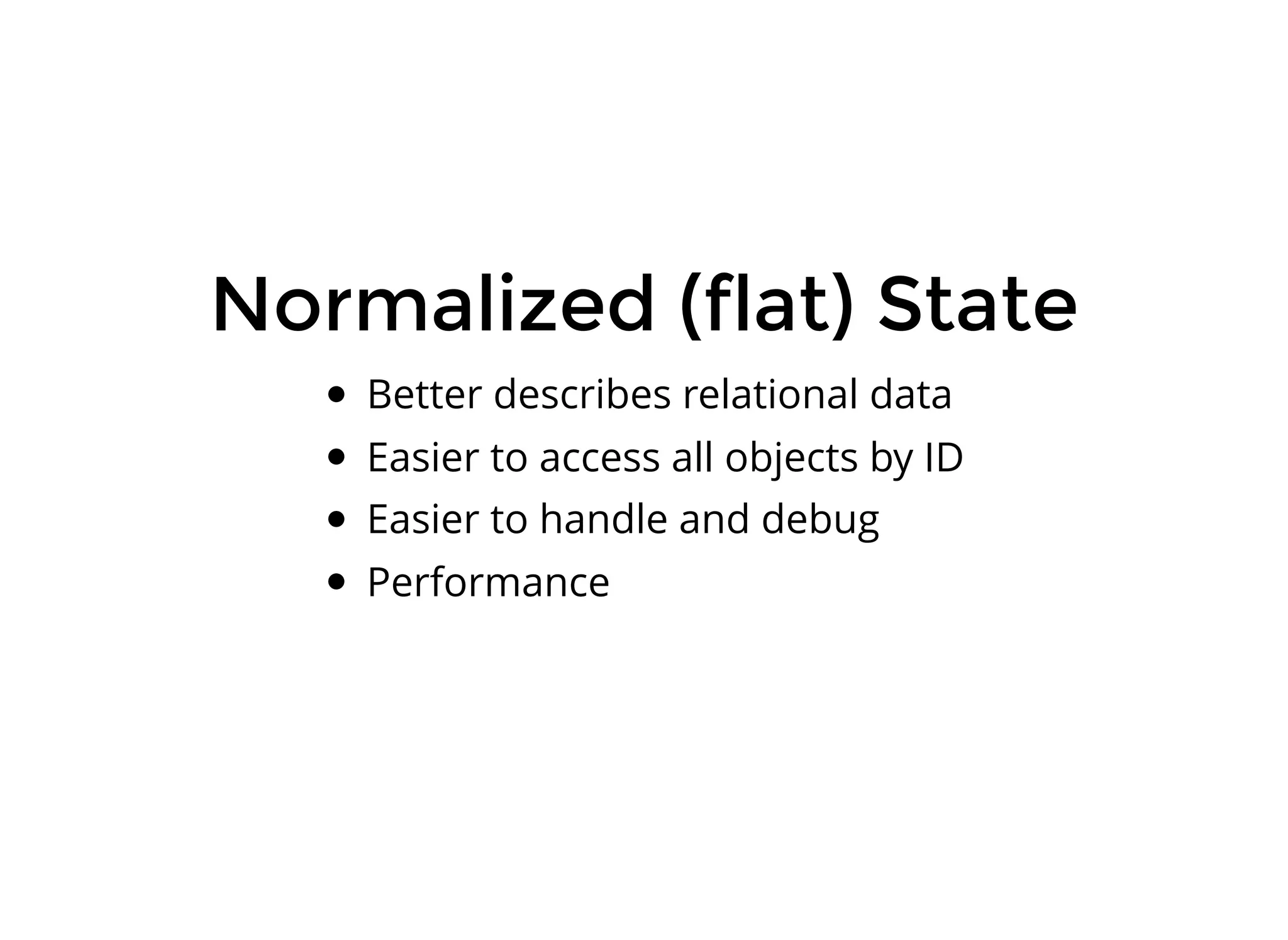
![[ { id: 1, name: 'Kate' }, { id: 2, name: 'Jane' } ] Prefer not to use arrays](https://image.slidesharecdn.com/redux-bad-practices-180116111409/75/Redux-Bad-Practices-A-List-of-13-Bad-Practices-and-How-to-Avoid-Them-24-2048.jpg)
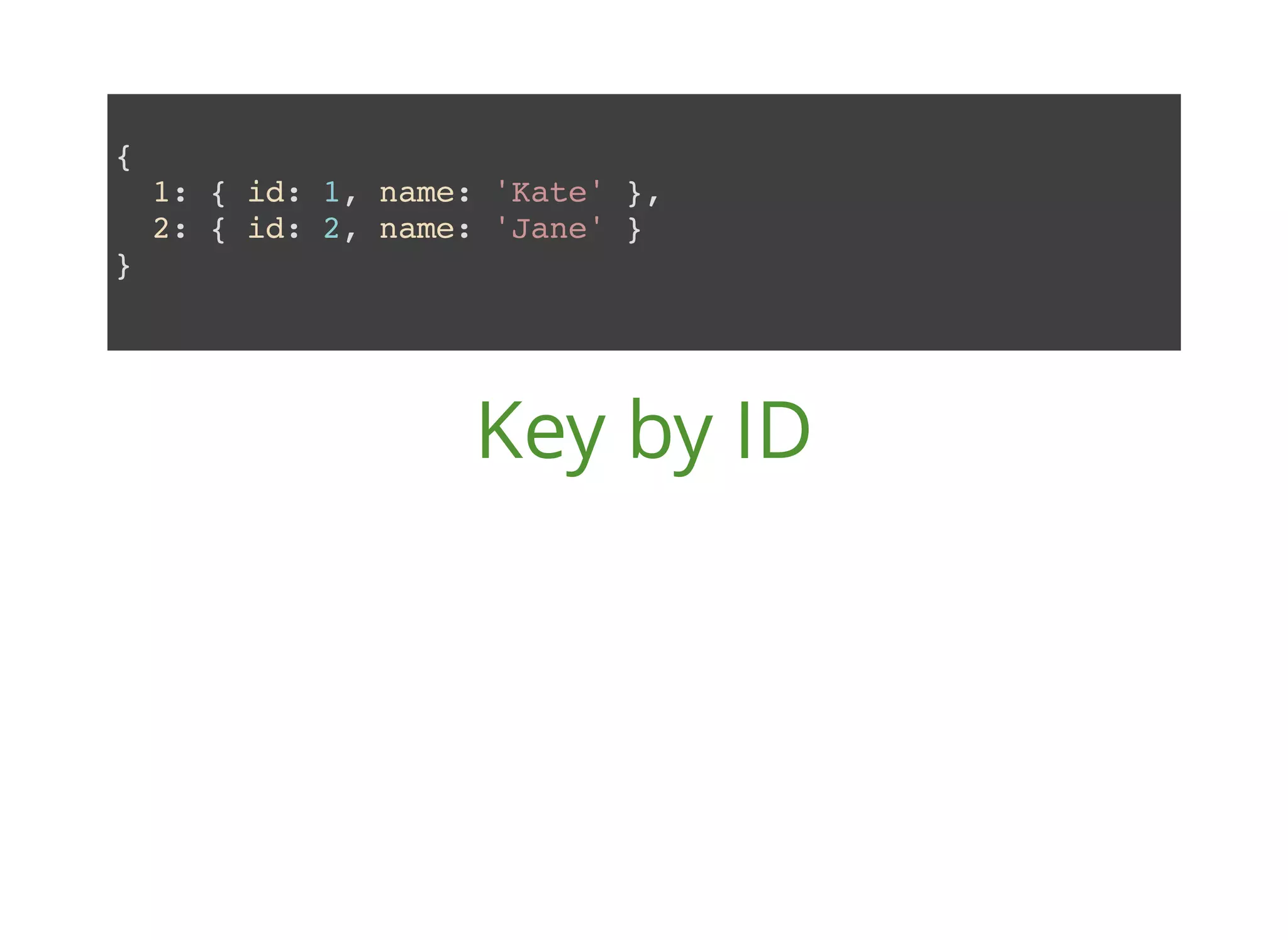
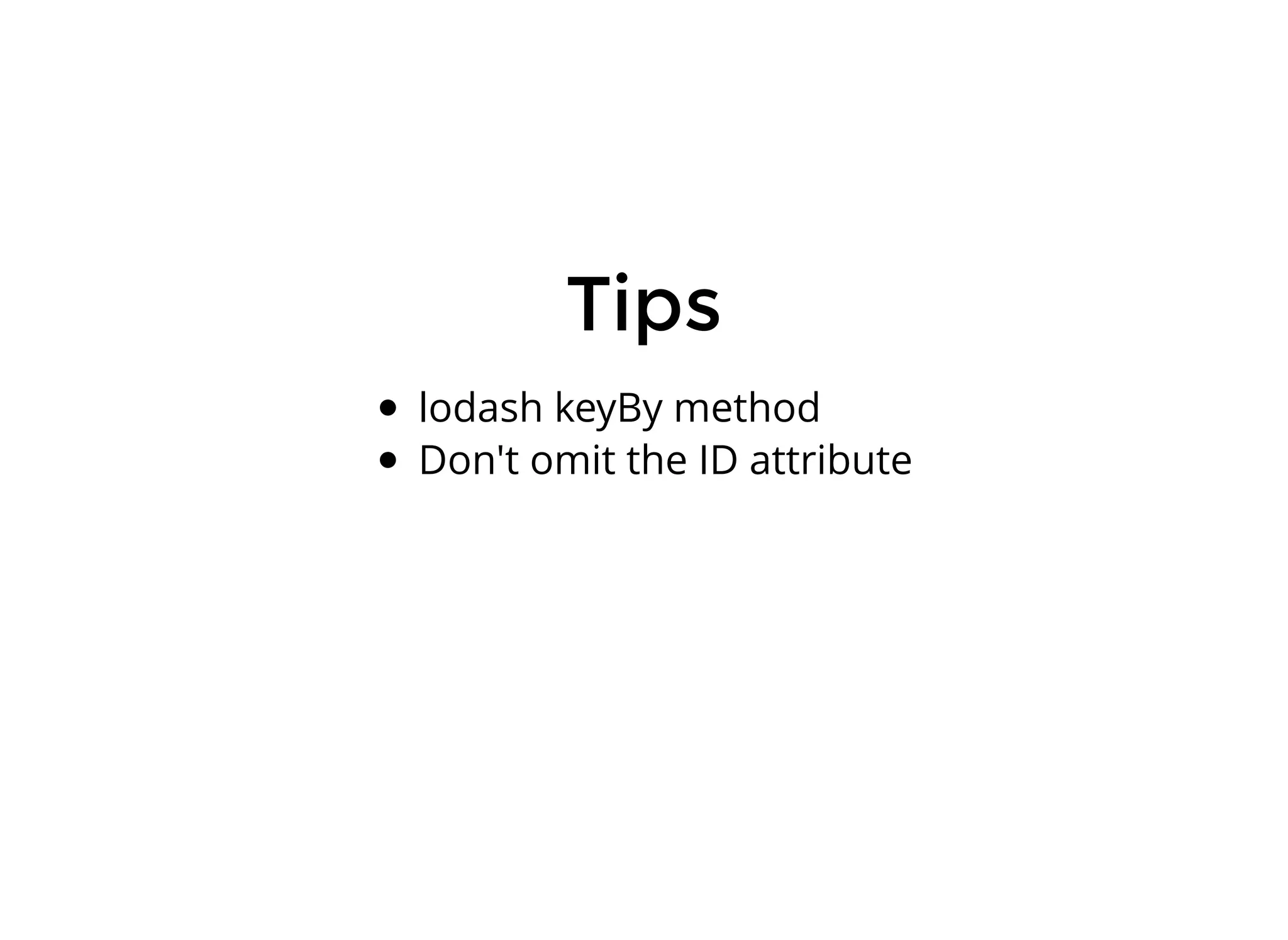

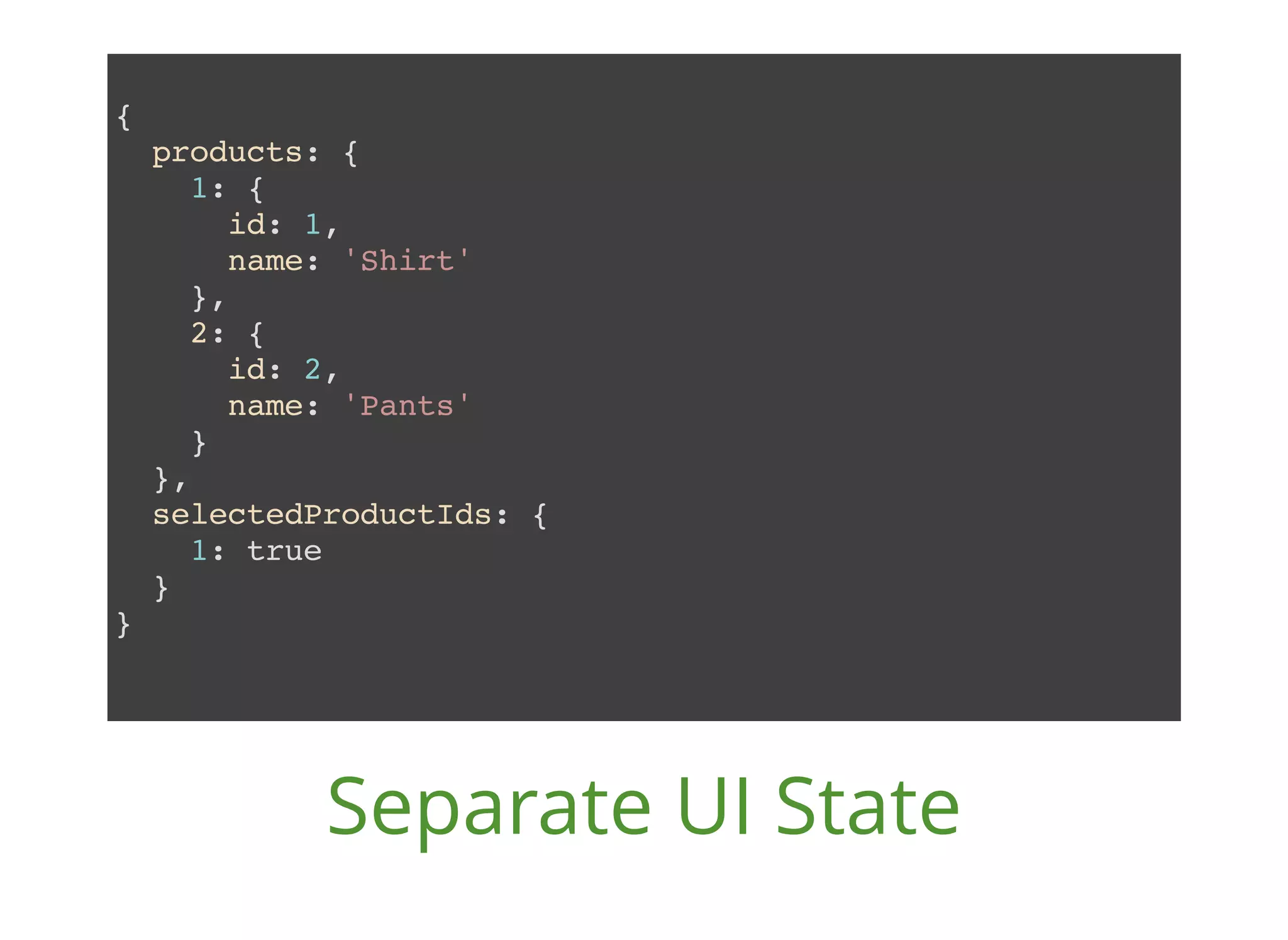
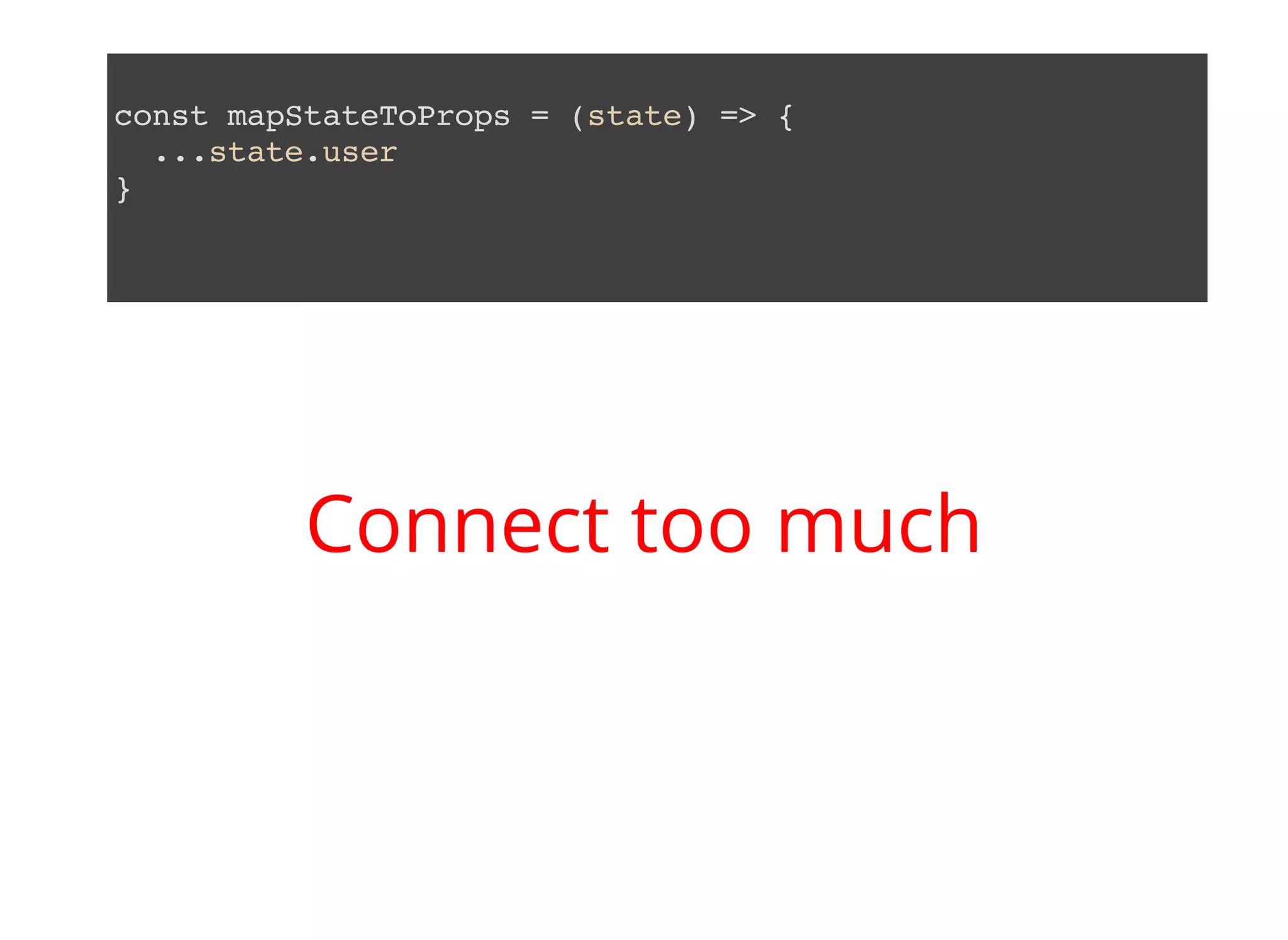
![const mapStateToProps = (state) => ({ firstName: state.user.firstName, lastName: state.user.lastName, }); // or const mapStateToProps = (state) => pick(['firstName', 'lastName'], state.user); Connect what you need](https://image.slidesharecdn.com/redux-bad-practices-180116111409/75/Redux-Bad-Practices-A-List-of-13-Bad-Practices-and-How-to-Avoid-Them-30-2048.jpg)
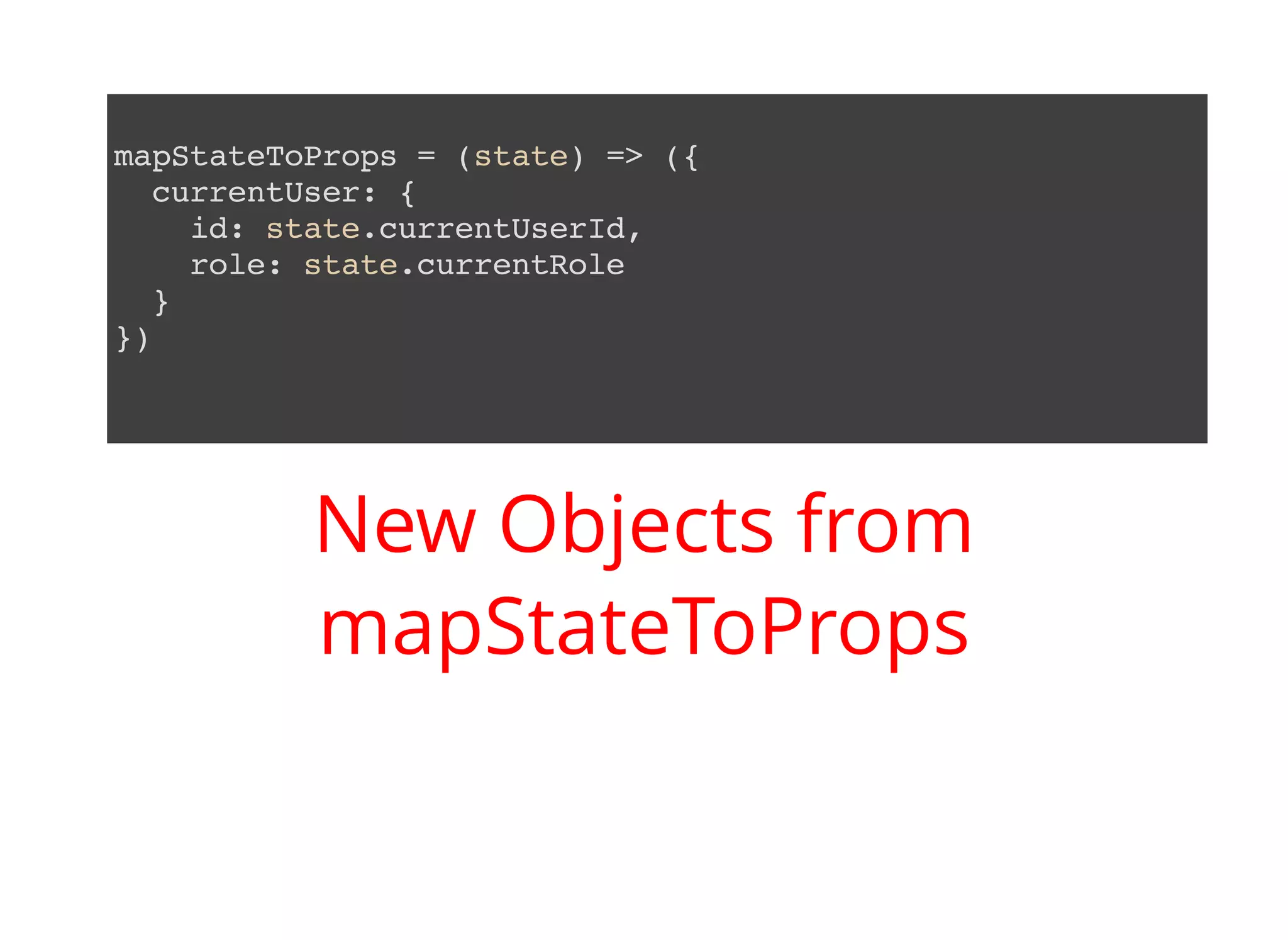
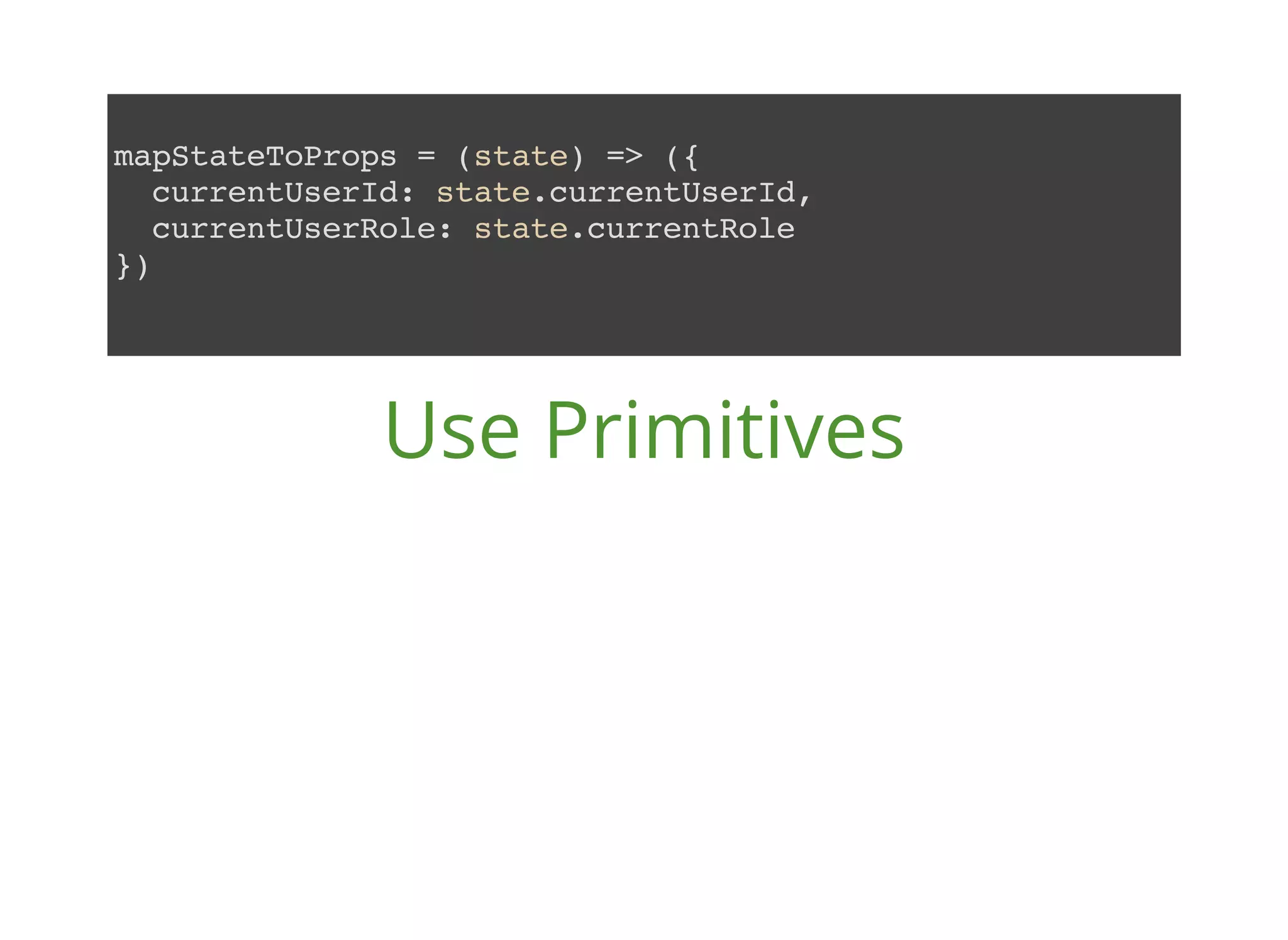
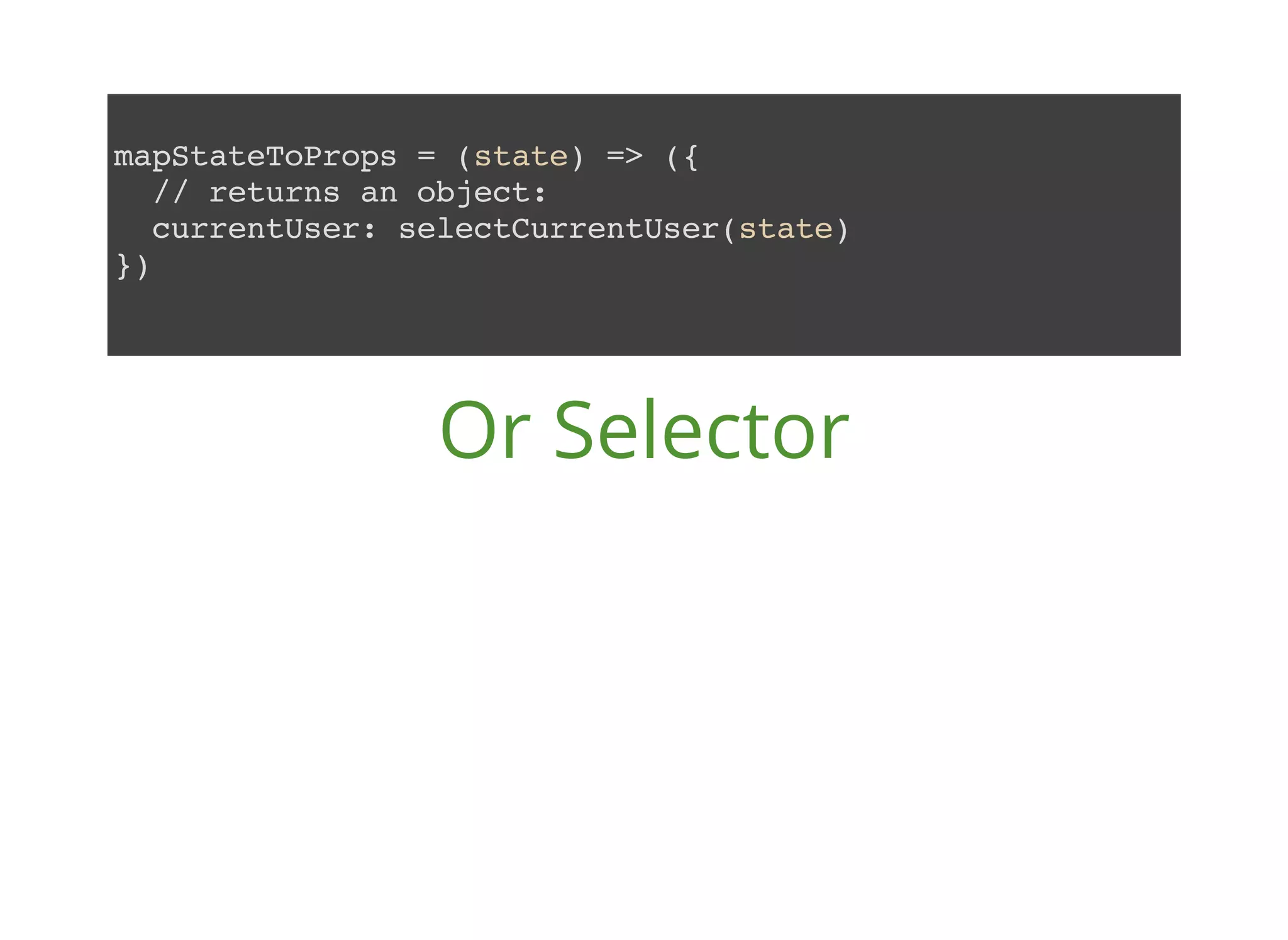
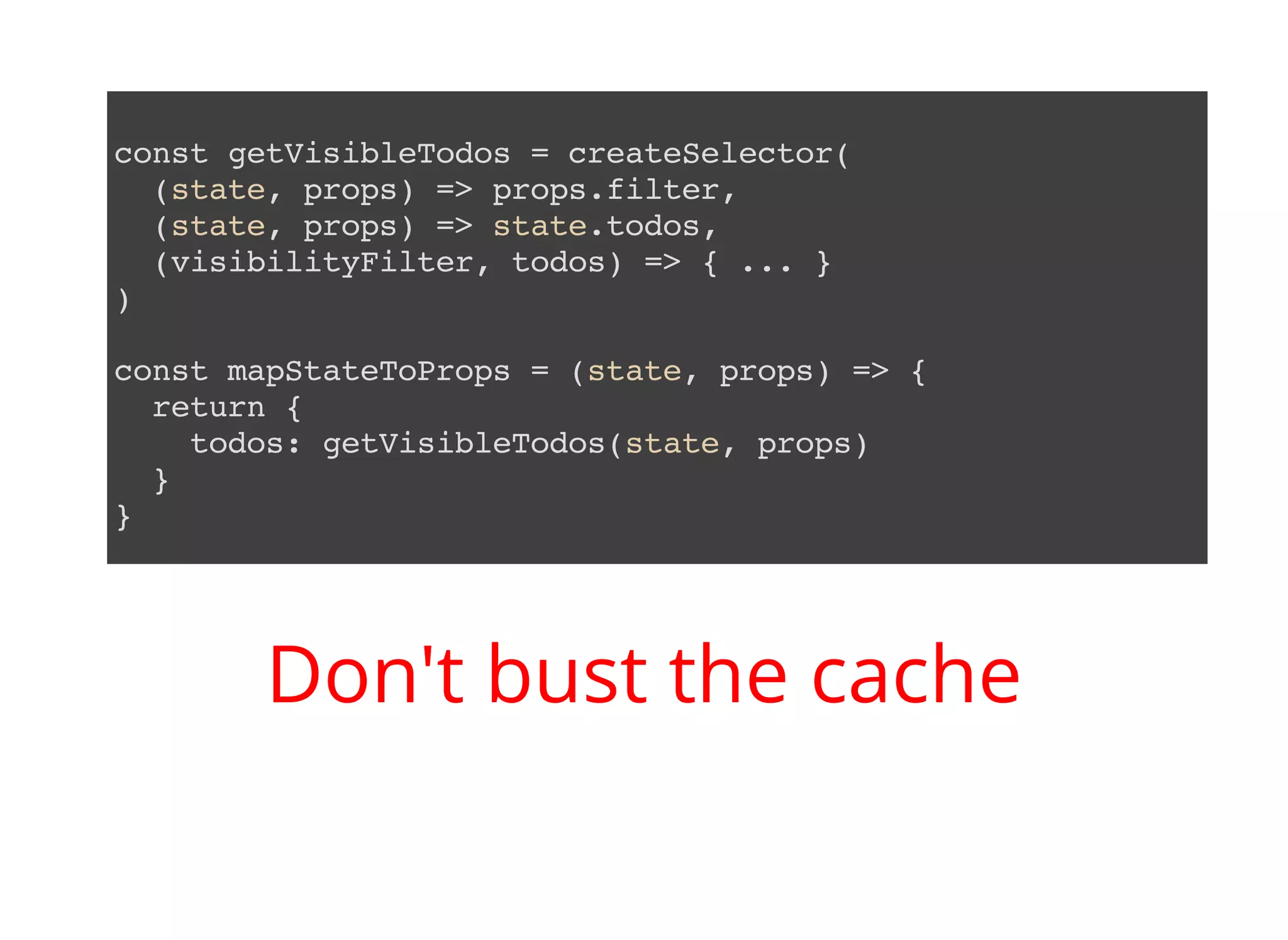
![const makeGetVisibleTodos = () => { return createSelector( [ getVisibilityFilter, getTodos ], (visibilityFilter, todos) => { ... } ) } const makeMapStateToProps = () => { const getVisibleTodos = makeGetVisibleTodos() const mapStateToProps = (state, props) => { return { todos: getVisibleTodos(state, props) } } return mapStateToProps } Selector Factory](https://image.slidesharecdn.com/redux-bad-practices-180116111409/75/Redux-Bad-Practices-A-List-of-13-Bad-Practices-and-How-to-Avoid-Them-35-2048.jpg)



